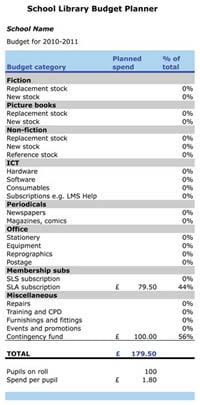Understanding of IL
My understanding of information literacy (IL) was vague before studying this subject. I now have a much better grasp of the vast area of knowledge underpinning information, literacy and IL as a concept in its own right. I recognise that there are many conflicting definitions of IL and that its use depends on context and purpose. My reading has reinforced my previous assumption that it is necessary to be able to read, write and understand before engaging with the complexities of the information landscape. I previously saw my role as TL in school as teaching students IL skills and competencies, in alignment with the Behaviourist Approach (School of Information Studies, 2018), and assisting students with achieving outcomes. I previously wrote that I saw this approach as ‘a chance to ensure that information literacy is included in lessons’ (O’Rourke, 2018). I still think this is true as students who are in schools without a TL ‘are missing out on learning key information literacy skills’ (O’Rourke, 2018) As a result of the course, I would really like to become proficient in using the GI framework and I am excited about putting my skills into action and learning how to be an effective participant in inquiry learning. This subject has opened my eyes to the importance of using this framework to assist students to develop key skills in information literacy which are a significant contributor to being able to successfully engage with the changing information landscape.
IL models
I have had very little experience of using IL models and my knowledge of the impact on student learning was limited, as was the importance that ‘students internalise an information process’, (Fitzgerald, 2015). I did not really understand the structure and terminology of guided inquiry or problem based learning. I had often seen the images for each of the levels of GI but had never been involved in any programming or real collaboration for the process and was unaware of how many resources, particularly scaffolds, were available to support the process. (Edublogs, 2018)
I have developed much more understanding of each stage of the GI process and really appreciate how the structure at each stage support students towards achieving their tasks and goals. I realise how unprepared and uninformed I was when I blogged about trying an inquiry approach to a science research lesson (O’Rourke, 2018, “TL – on the job”, para 3). I am particularly drawn to understanding and using the GI framework for inquiry learning as its use has been well researched, documented and evaluated, ‘grounded in research’. (Kuhlthau, 2007).
This subject has alerted me to the importance of introducing an IL model in schools to enable more effective teaching of the inquiry skills in the Australian Curriculum. I also understand the need for me to become more experienced and adapt at programming and collaborating with other teachers to be able to move learners from ignorance to understanding, (Fitzgerald, 2015).
TL role
In my experience as a TL, I have never successfully been involved with a structured process of inquiry learning. I have watched a few lessons as an observer, but now I have read more about the specifics of each model, I am not sure what I was observing! I would really like to be involved much more in this area – my next position is in a school where a lot of cross-curriculum teaching is practised which might lend itself to inquiry learning.
I have experienced teaching some elements of the GI process as I have taught skills, such as referencing, CRAP evaluation and searching and retrieval of databases as a regular feature at the beginning of lessons across faculties. To some degree, this fulfils the task of introducing information literacy skills throughout the inquiry process as needed at each GI stage. I have worked as a research librarian so I have experience of working with academic databases, and this has been useful for my senior students. As I wrote in my ‘first thoughts’ blog, ‘The best part of my current job is working one on one with senior students to find appropriate resources’ (O’Rourke, 2018, “first thoughts”, para 7). However I realise that this is only one part of the GI process and I am now focused on developing my skills around the very important first stages of GI where students develop an interest in a topic and feel engaged enough to explore a subject that is of interest to them. ‘I am looking forward to upskilling myself and learning how to do the job better through studying this course’, (O’Rourke, 2018, “first thoughts”, para 2).
References
Edublogs. (2018). Guided Inquiry in Australia. Retrieved from http://guidedinquiryoz.edublogs.org/
Fitzgerald, L. (2015) Guided inquiry in practice. Scan, 34(4) 16-27. Retrieved from https://search-informit-com-au.ezproxy.csu.edu.au/fullText;dn=211651;res=AEIPT
Kuhlthau, C. C., Caspari, A. K., & Maniotes, L. K. (2015). Guided Inquiry: Learning in the 21st Century, 2nd Edition : Learning in the 21st Century (Vol. Second edition). Santa Barbara, California: Libraries Unlimited. Retrieved from http://ezproxy.csu.edu.au/login?url=http://search.ebscohost.com/login.aspx?direct=true&db=nlebk&AN=1061481&site=ehost-live
O’Rourke, J. (2018, January 8). RE: Forum 4.3: The TL and curriculum. [Online discussion comment]. Retrieved from Charles Sturt University website: https://interact2.csu.edu.au/webapps/discussionboard/do/message?action=list_messages&course_id=_32994_1&nav=discussion_board_entry&conf_id=_59375_1&forum_id=_143382_1&message_id=_2032481_1
O’Rourke, J. (2018, November 12). Tl – first thoughts [Blog post]. Retrieved from https://thinkspace.csu.edu.au/judyo54/2018/11/12/first-thoughts/
O’Rourke, J. (2018, November 22). Tl – on the job [Blog post]. Retrieved from https://thinkspace.csu.edu.au/judyo54/2018/11/22/tl-on-the-job/
School of Information Studies, (2018). Information literacy. In Introduction to Teacher Librarianship [ETL401 Modules: Topic 5]. Retrieved from https://interact2.csu.edu.au/webapps/blackboard/content/listContent.jsp?course_id=_32994_1&content_id=_2550329_1My blogs



